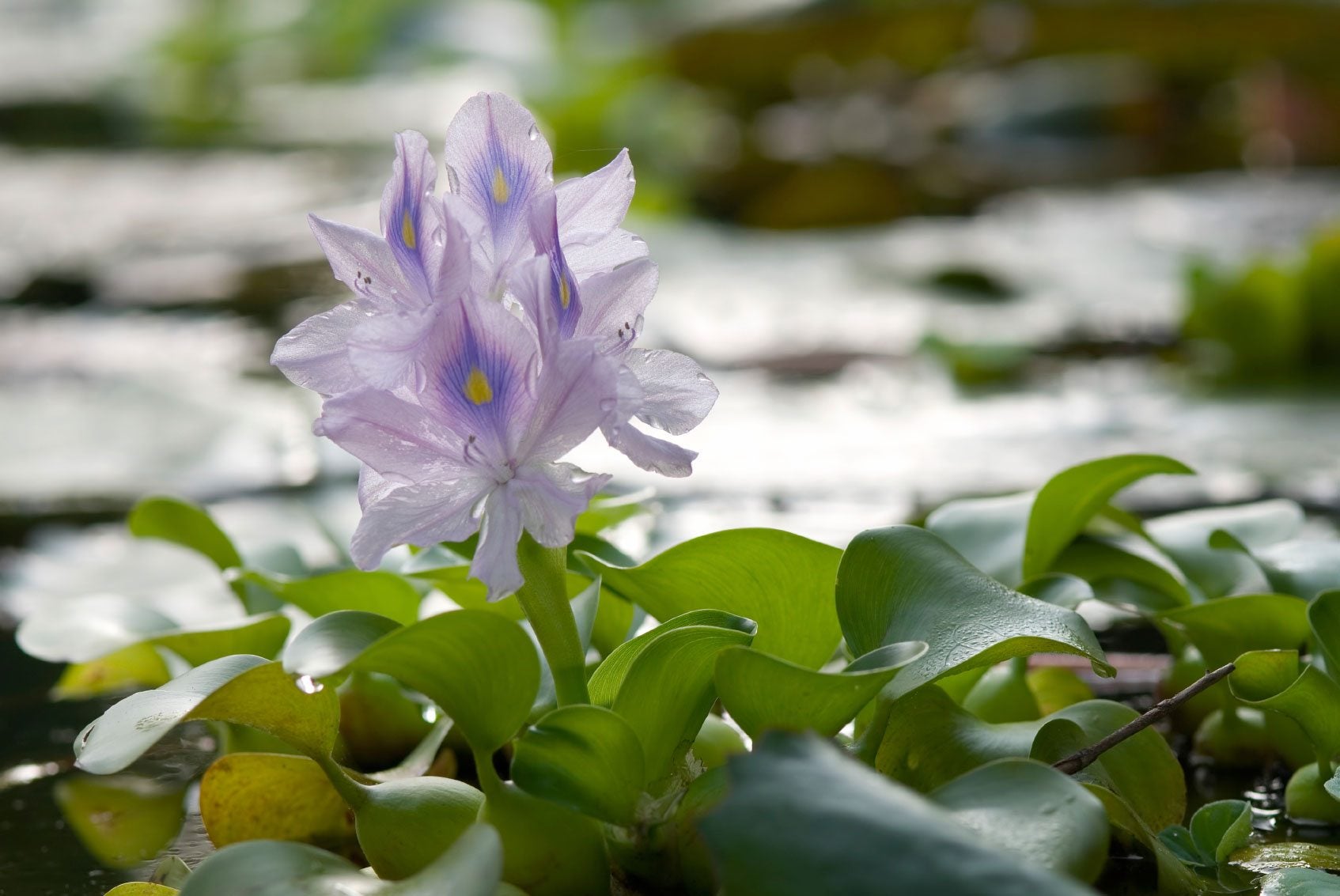Tips For Growing Water Hyacinth Plants


Beautiful but destructive in the wrong environment, water hyacinths (Eichhornia crassipes) are among the showiest of water garden plants. Flower stalks that grow about six inches (15 cm.) above the foliage arise from the centers of the rosettes in spring, and by the end of spring, each plant holds as many as 20 gorgeous purple flowers. The flowers last until fall and make striking cut flowers.
How to Grow Water Hyacinth
Growing water hyacinth plants is easy. Once established, they require no special care except occasional thinning to keep them from choking out everything else in the pond. Under perfect conditions, a colony of water hyacinths can double its size every 8 to 12 days. Water hyacinths need full sun and hot summer temperatures. Introduce them to the garden by scattering bunches of plants over the surface of the water. They quickly take hold and begin to grow. Thin the plants when they cover more than 60 percent of the water surface. Water hyacinth plants survive winters in U.S. Department of Agriculture plant hardiness zones 8 through 11. They are best grown as annuals in places where cold winters keep them in check by killing them back. In warmer areas, these plants do become invasive. You can overwinter them indoors in a sunny spot, but they are inexpensive to replace each year. Most gardeners don't find them worth the trouble to keep over winter.
Container Grown Water Hyacinths
A half barrel is an ideal container for a water hyacinth. The plants need full sun in garden ponds, but in containers they do best if they have shade from mid to late afternoon. Cover the inside of the barrel with a heavy duty garbage bag and then place a layer of soil in the bottom of the container. Don't use commercial potting soil, which contains fertilizers and other chemicals that may harm the plant and encourage the growth of algae. Commercial soils also contain perlite and vermiculite, which floats to the top of the container. Cover the soil with a thin layer of sand. City water is usually treated with chlorine or chloramine, which is harmful to plants. Garden centers sell products that remove the chlorine and chloramine from the water and make it safe for plants. There is no need to treat the small amounts of water that you use to top off the container through the season. You can allow the plant to float on the surface of the water, or anchor it in place by attaching one end of a length of nylon string to the plant and the other end to a brick. WARNING: Water hyacinth is a highly invasive species in areas with mild winters. The plants are banned in several states. Once they enter waterways, the plants grow and reproduce to form dense mats that choke out native species. A thick growth of water hyacinths can ensnare boat motors and make it impossible to use infested lakes for recreational purposes. The plants block out sunlight and deplete oxygen, killing off fish and other wildlife that live in the water.
Sign up for the Gardening Know How newsletter today and receive a free copy of our e-book "How to Grow Delicious Tomatoes".

Jackie Carroll has written over 500 articles for Gardening Know How on a wide range of topics.